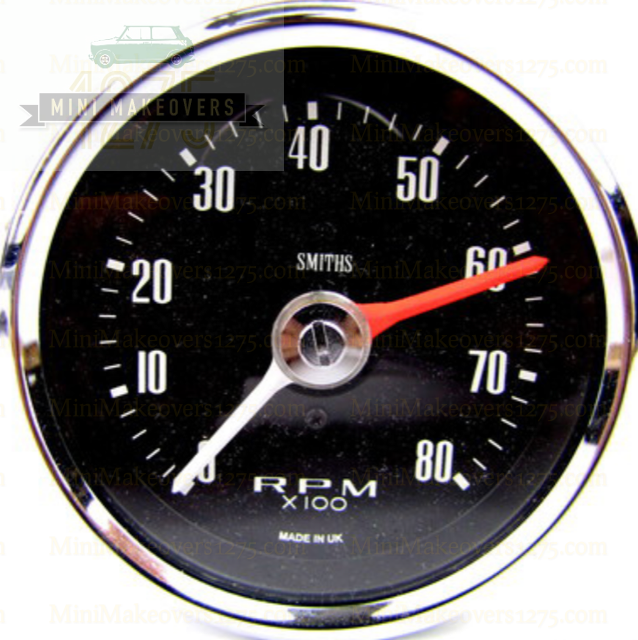Specialist Tips for Keeping and Adjusting Your Tachometer
Specialist Tips for Keeping and Adjusting Your Tachometer
Blog Article
The Significance of a Tachometer in Monitoring Engine Rate and Efficiency in Automotive Applications
In the realm of automotive design, the tachometer stands as a crucial instrument in the driver's toolbox, offering a direct home window into the inner functions of a vehicle's engine. Beyond its function as a mere gauge of revolutions per minute (RPM), the tachometer offers as a critical device for lovers and specialists alike, supplying real-time understandings right into engine efficiency and wellness. Comprehending the value of this device surpasses surface-level monitorings, delving right into the complex relationship in between engine rate, power output, and total driving experience. As we check out the complex duty of the tachometer in automotive applications, a deeper admiration for its effect on lorry characteristics and effectiveness begins to arise.
Significance of Checking Engine RPM
Keeping track of engine RPM, or revolutions per min, is a crucial aspect of automotive maintenance and performance evaluation. Engine RPM straight correlates with the speed at which the engine's crankshaft revolves, suggesting just how swiftly the engine is running.
Additionally, monitoring engine RPM is crucial for efficiency analysis in auto racing and high-performance automobiles. Keeping ideal RPM levels is vital for achieving peak power output and acceleration. Racers frequently utilize tachometers to guarantee they are operating within the suitable RPM variety for maximum performance. In recap, monitoring engine RPM is not just essential for detecting problems yet also for maximizing engine performance in numerous automobile applications.

Benefits of Real-Time Data
In automobile applications, real-time data plays an essential function in giving immediate understandings right into the efficiency and problem of the automobile. By constantly checking numerous specifications such as engine rate, temperature level, gas consumption, and more, real-time data uses many benefits that add to improved efficiency and security on the roadway.
One significant advantage of real-time information is its capacity to alert vehicle drivers and specialists to any type of abnormalities or concerns without delay. This aggressive method makes it possible for fast identification of possible problems, permitting prompt treatments to prevent further damage or malfunctions. Additionally, real-time information helps with efficiency optimization by offering prompt feedback on driving routines and engine effectiveness. Motorists can adjust their behavior in real-time based upon this details to attain far better gas economic situation and extend the lifespan of their automobile.

Additionally, real-time data plays an important function in modern vehicle diagnostics, making it possible for specialists to promptly diagnose and deal with breakdowns. This results in decreased downtime, lower upkeep prices, and eventually, improved general automobile reliability and durability (tachometer). By harnessing the power of real-time information, vehicle stakeholders can make enlightened choices that favorably influence both the performance and long life of the car
Influence On Gear Shifts
The tachometer plays an essential function in enhancing gear shifts by providing real-time engine rate information to the driver. When coming close to the redline on the tachometer, it indicates the vehicle driver to upshift to prevent over-revving the engine and causing prospective damages.
In addition, the tachometer aids in achieving smoother gear transitions, especially in manual transmissions. By checking engine speed, vehicle drivers can perform gear shifts at the optimal RPM array, reducing snagging movements and minimizing endure the transmission parts. This precision on duty changes not only boosts driving check my source comfort however additionally adds to fuel efficiency.
Enhancing Fuel Effectiveness
Given the crucial function the tachometer plays in enhancing equipment shifts for efficiency and engine wellness, it straight adds to optimizing fuel effectiveness in vehicle applications. By supplying real-time responses on engine speed, the tachometer assists chauffeurs in keeping the most efficient RPM array for gas economic situation. When motorists consistently check the tachometer and adjust their motoring habits as necessary, they can stay Continued clear of unneeded fuel intake caused by over-revving or lugging the engine.
Additionally, the tachometer helps drivers determine the most fuel-efficient equipment to be in at any kind of given moment, stopping the engine from working more challenging than essential. In verdict, the tachometer serves as an important tool in improving gas effectiveness by promoting ideal driving behaviors and identifying areas for improvement in the vehicle's performance.

Making The Most Of Engine Durability
The tachometer's function in checking engine speed and performance is important in making sure the long life of auto engines. By making use of the tachometer efficiently, drivers can optimize engine long life through conscious RPM administration. Continually revving an engine too expensive can cause excessive wear and tear on important components, such as the pistons, valves, and bearings. Over time, this can cause lowered engine efficiency and potential breakdowns. Monitoring the tachometer enables chauffeurs to remain within the advised RPM array for their lorry, protecting against unneeded strain on the engine and expanding its life expectancy.

Conclusion
Finally, the tachometer plays a critical function in monitoring engine rate and performance in automotive applications. By providing real-time information on RPM, it permits for reliable gear shifts, enhanced gas efficiency, and optimized engine long life. This device is essential for maintaining optimal engine efficiency and making certain the overall capability of a car.
Report this page